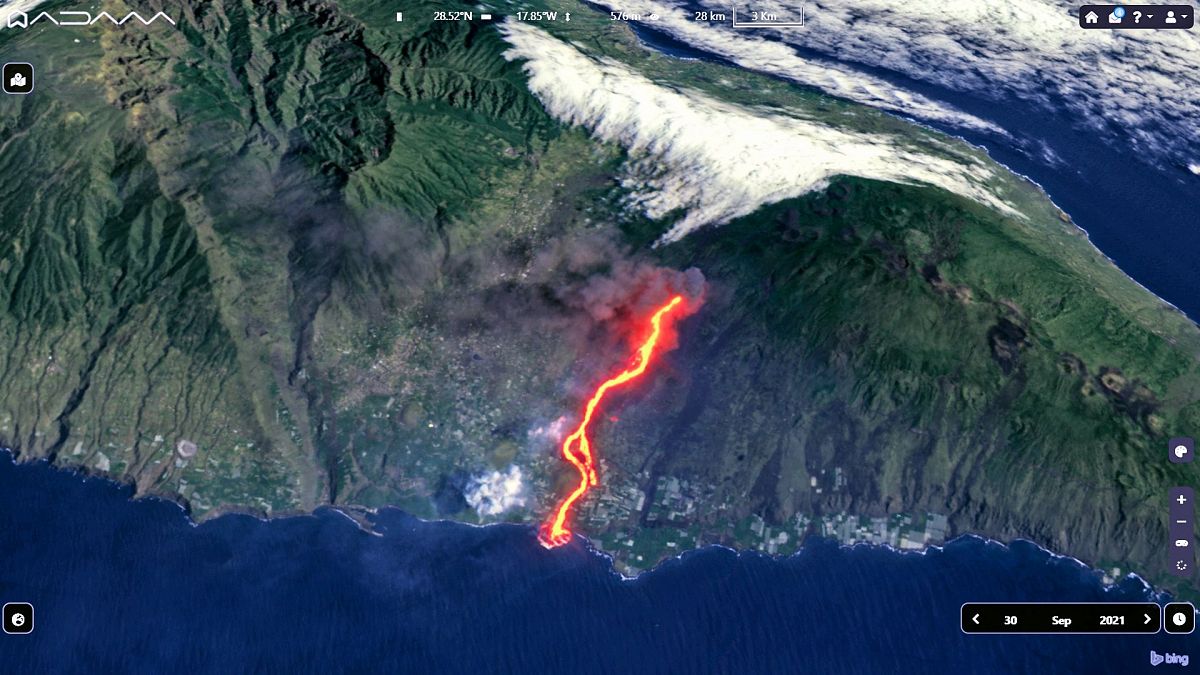Local residents are advised to say and wear face masks and eye protection to protect themselves from potentially toxic gas and heavy falls of volcanic ash
The volcano on La Palma in Spain's Canary Islands blew open a new fissure on Friday, triggering a series of small earthquakes.
Authorities said they have recorded eight new earthquakes up to magnitude 3.5.
They were waiting to see whether lava from the new fissure would join the main flow, which has travelled six kilometres and reached the Atlantic Ocean, shown in the satellite image, above.
The molten rocks have solidified upon contact with the seawater, creating a kind of peninsula.
On Thursday afternoon, the surface area of this expansion was approaching 19 hectares, compared with 10 at the beginning of the morning, David Calvo, spokesman for the Volcanological Institute of the Canary Islands (Involcan) said.
Experts have warned it is likely to have a devastating short-term impact on the local marine ecosystem.
The meeting of lava and water has also produce potentially toxic gases.
Officials were monitoring air quality along the shoreline and although sulfur dioxide levels in the area rose, they do not represent a health threat, La Palma’s government said.
However, it advised local residents to stay indoors. It also recommended that people on the island wear face masks and eye protection against heavy falls of volcanic ash.
There have been no reported injuries or death since the September 19 eruption.
The lava has so far hit more than 1,000 buildings, including homes and farming infrastructure, and entombed around 338 hectares (835 acres).
La Palma, home to about 85,000 people who live mostly from fruit farming and tourism, is part of the volcanic Canary Islands, an archipelago off northwest Africa that is part of Spain's territory.
The island is roughly 35 kilometres (22 miles) long and 20 kilometres (12 miles) wide at its broadest point. Life has continued as usual on most of the island while the volcano is active.
The two previous eruptions in La Palma took place in 1949 and 1971. They caused a total of three deaths, two of which were due to gas inhalation.
